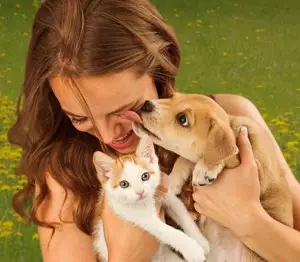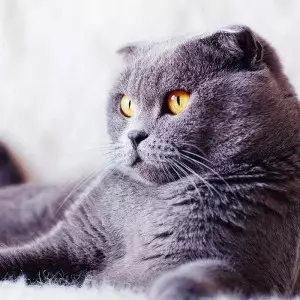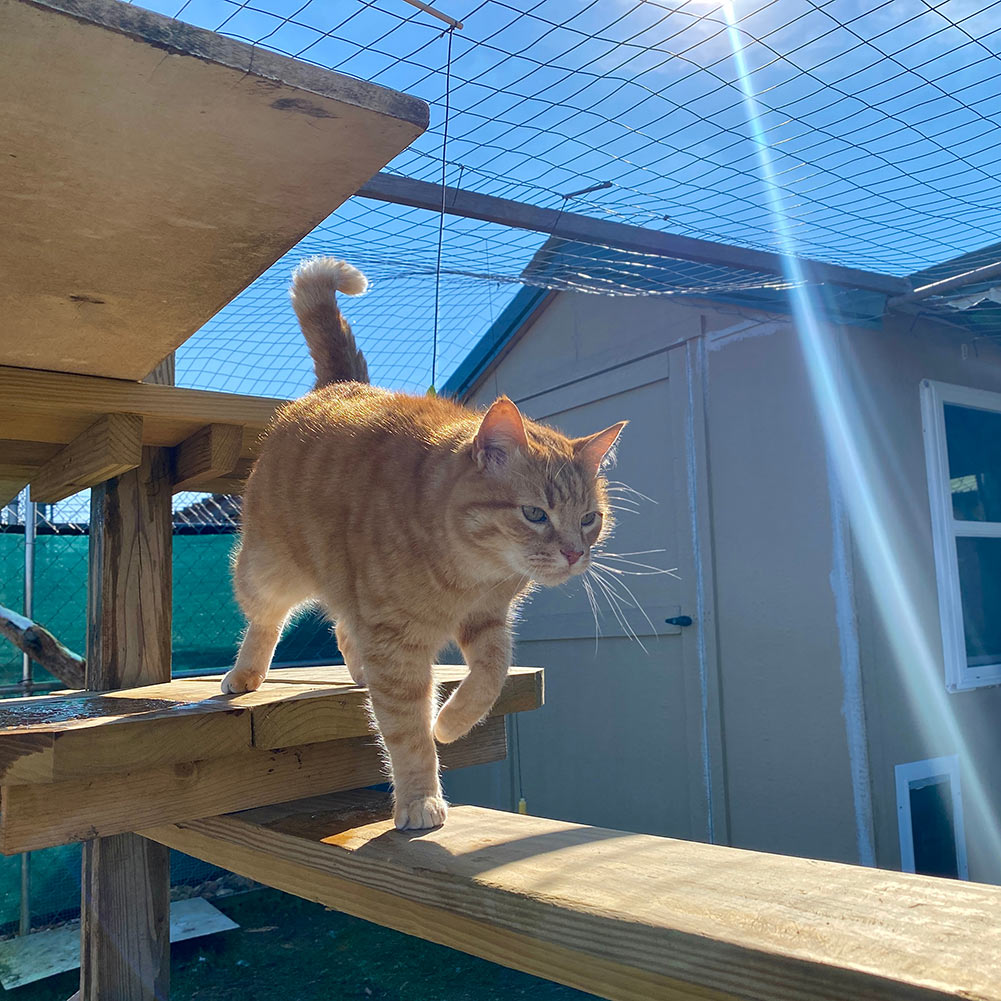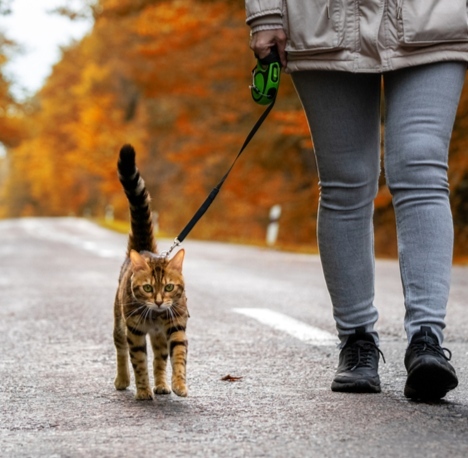Cat play and toys – it’s not just fun & games!
While playtime with your kitty can be great fun for both of you, play is also serious business for felines. Play is an important part of a kitten’s healthy development, as it teaches them essential life skills and lessons about the world around them.
Play is not just for kittens, though. It provides mental stimulation and physical activity for cats of all ages, keeping them active, entertained and engaged. While many cats will play on their own, playing with their humans strengthens bonding and facilitates communication. Play is a safe outlet for pent-up energy and a great way to keep their brains alert.

The link between play and hunting
Cats that can freely roam outdoors will often engage in hunting activity. Their need to hunt is usually not driven by hunger, but by their strong predatory instinct. It’s also likely that hunting activity – the stalk, pounce, play and kill – releases feel-good hormones called endorphins.
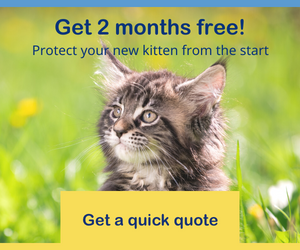 Cats’ free play tends to mimic hunting activities. Outdoors, if there is no access to prey, they may pounce on falling leaves or even grass blowing in the wind. Indoors, they may “hunt” shoes or socks, bits of string, toilet rolls or scrunched up tissues.
Cats’ free play tends to mimic hunting activities. Outdoors, if there is no access to prey, they may pounce on falling leaves or even grass blowing in the wind. Indoors, they may “hunt” shoes or socks, bits of string, toilet rolls or scrunched up tissues.
While hunting may be beneficial for cats, it is having a devastating impact on native wildlife. With the growing impetus to keep domestic cats indoors to protect wildlife comes the risk of boredom and lack of stimulation, and the potential development of “problem” feline behaviours.
Indoor cats need more entertainment than outdoor cats. As more cats are being kept exclusively indoors, cat parents are increasingly faced with a new challenge – making sure their cats are sufficiently stimulated, both physically and mentally. Scheduling interactive playtime and having a selection of appropriate toys for solo play can make all the difference between a happy, contented cat and a bored, destructive one.
Which toys are best for cats?
It makes sense that most cats should enjoy toys that allow them to stalk, pounce, chase and bat objects with their paws.
However, when it comes to cats, expect the unexpected! Cats are notoriously picky and may turn their noses up at the “best” and most expensive toys in the pet shop, preferring rather to play with the cardboard box or wrapping paper it comes in! Or they may play with a new toy once, appear to love it, and then never show interest in it again.
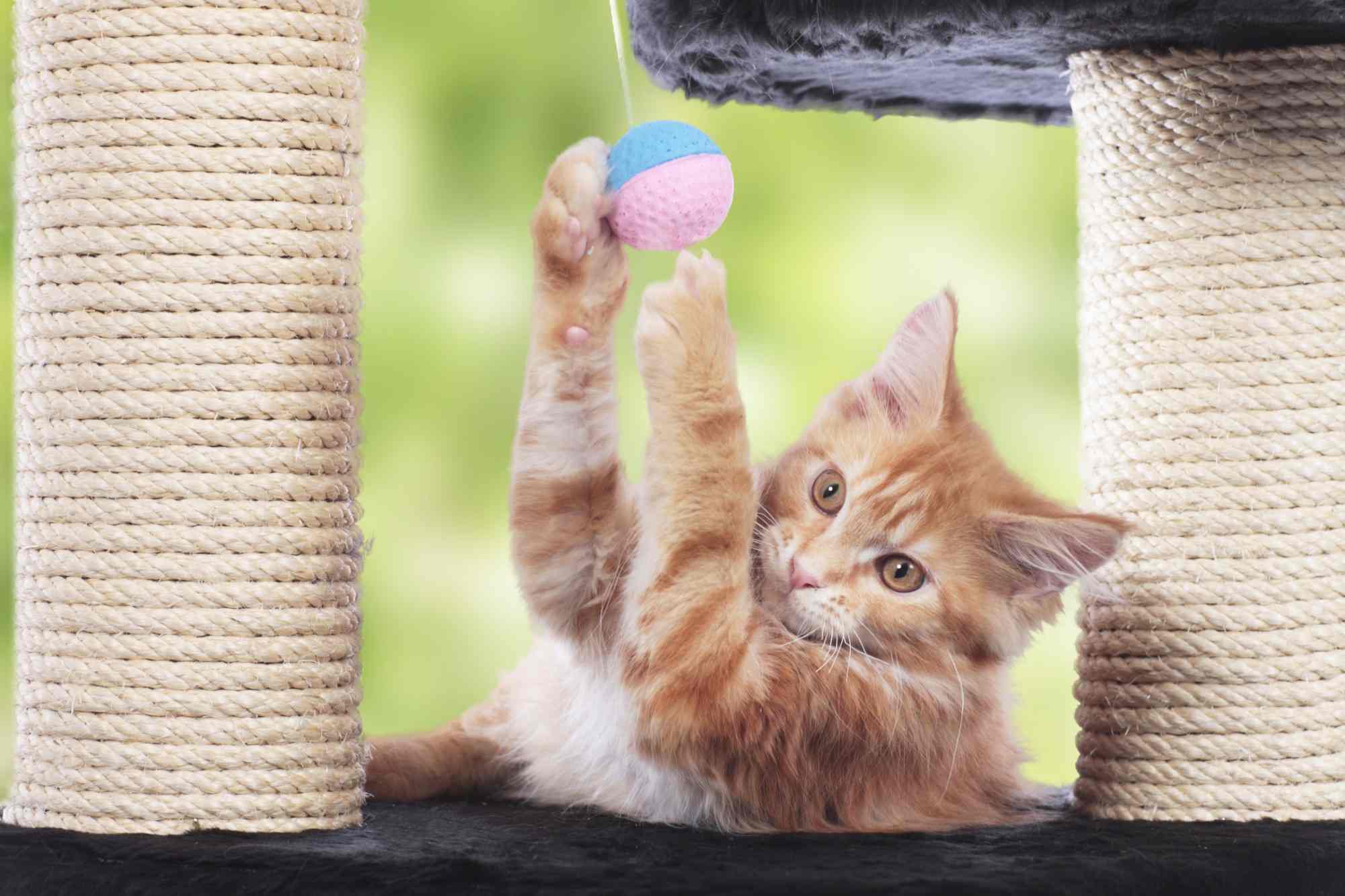
For these reasons, rather than recommending any specific toys, we will look at various types of toys and suggest practical ways to engage and stimulate your cat without having to fork out on extravagant white elephants!
Top toys for self entertainment
When it comes to selecting toys for solo play, each cat will have specific favourites, based on texture, shape, size and smell, as well as how the toy moves and whether it make a noise while doing so.
If you haven’t yet worked out what your cat’s preferences are, you may need to use a bit of trial and error, although there are some cat toys that do seem to appeal to most kitties, making them a good place to start.
Robotic toys
Although robotic toys can be pricey, they have advantage of being able to entertain your cat – potentially for hours – while you are busy or away from home. Resembling or mimicking a small animal, a good robotic toy entices your cat to stalk, chase, and pounce.
More expensive types of robotic gadgets can swivel, turn and rotate, moving the toy around the room in an erratic pattern. Fast and slow modes can be useful, so that it can be set to match the energy level of your cat. So is an automatic mode which turns the toy on and off for various periods of time over a certain number of hours.
Catnip toys
Plush toys that can be filled with catnip may keep your cat interested, energetic, and entertained … or maybe not. Catnip stimulates some cats, encouraging play and even reducing stress and promoting relaxation. However, a third of cats don’t respond to catnip. One of the reasons may be that catnip can get old and stale pretty quickly, so if your cat is disinterested, it may be worthwhile purchasing some very potent, fresh catnip and crushing a leaf to see if your cat becomes more responsive.
Puzzle feeders
These are great for getting a food-motivated cat to interact with a toy. Basically, you place your cat’s favourite treats or pieces of dry food in various compartments of the puzzle toy. Fishing the treats out of their hiding places with their paws piques their curiosity and stimulates their senses. Not only are they using their intellect and hunting skills, when they succeed, they get a reward (the treat), which prevents frustration.
Not just for treats, if your kitty loves to guzzle down her food, you can turn mealtimes into a brain-stimulating exercise by using a suitable puzzle feeder. You can buy these from pet stores or make your own.
Simple DIY puzzle feeders
- Turn a paper towel roll into a puzzle feeder by cutting various size holes in a paper towel roll, sealing the ends with tape and placing treats inside. Make it more challenging by decreasing the size of the holes.
- Turn a plastic or cardboard drink bottle into a puzzle feeder by cutting different sized holes in the bottle and placing cat biscuits or dry food inside it. Your cat will learn that batting the bottle releases a piece of food, and she will take longer to eat it than if it’s laid out for her!
Top interactive toys
Play is more fun if you get involved too. Here are some suggestions for engaging and stimulating cat toys that you and your cat can enjoy together.
Laser pointers
These are a favourite toy for many cats. They are also one of the best toys for physical exercise; if you’ve used a laser pointer on a cat who takes to it, you know how much running occurs when she tries to follow and “catch” the moving dot of light!
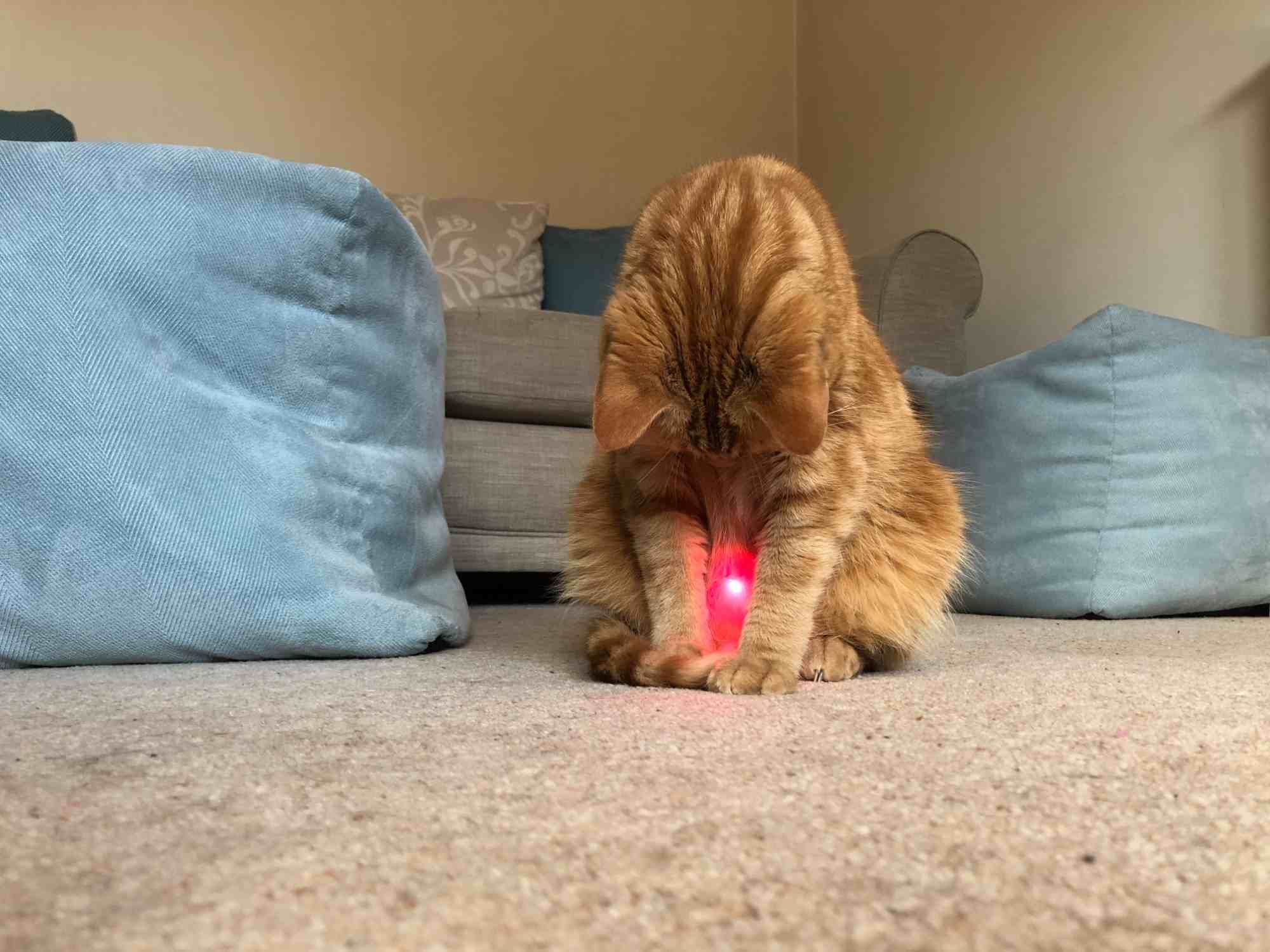
Be aware that some cats get frustrated by laser pointers. To avoid this, use it only for short periods and sometimes shine the laser on treats or toys that your cat can actually pounce on and catch. Also, be aware that many types of laser toys are flimsy or require small watch-type batteries that most people don’t have conveniently lying around.
Pheasant feathers
Cats cat rarely resist chasing a feather that is “snaked” along the floor or held overhead for the cat to bat at. Playing a game with a “disappearing” feather can really get some cats excited: place a towel or pillow over the base of the feather and slowly pull the feather further under the covering so that it “hides” right in front of the cat’s eyes. Your cat may go slightly crazy trying to grab it before it disappears! Pheasant feathers can be purchased from pet stores or hobby shops.
Fishing poles
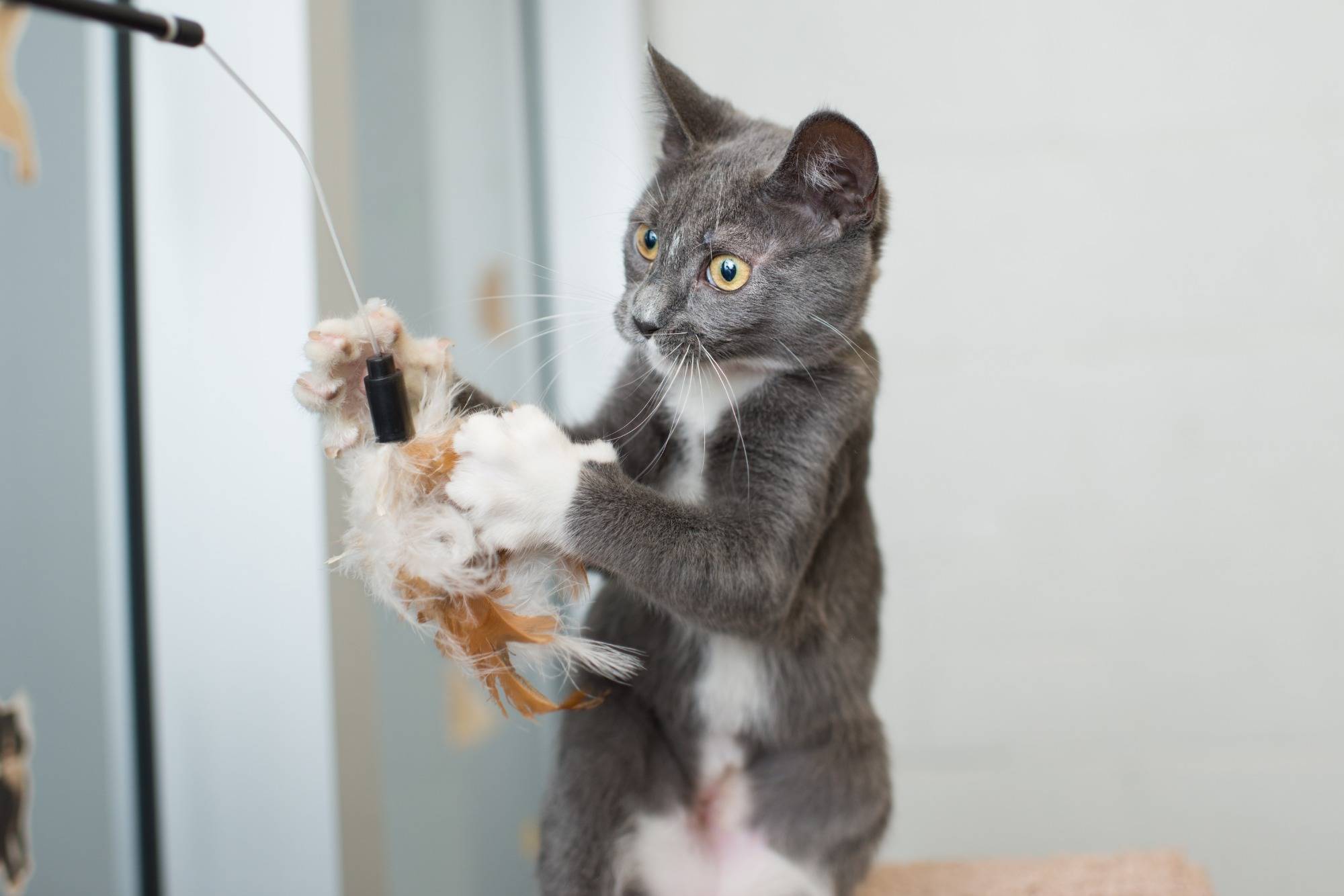
Fishing pole lure toys really appeal to many cats. With colourful yarn, a small toy or a feather on the end of the pole that flutters above them, these toys mimic prey and provide a safe outlet for hunting behaviours. Watch your cat jump and bounce around as she attempts to catch the dangling object. Allowing her to catch and ‘kill’ the dangling object periodically will stop her from getting frustrated. Cats like to win!
You can purchase fishing pole toys from pet stores in a variety of styles – some have bells, shiny mylar, rattles and more that keep cats intrigued. Or a simple homemade version might do the trick. Simply tie a feather or small toy to one end of a stick and see how you go.
Bubble wands
A simple bubble wand is a cheap but highly effective toy that can provide cats with plenty of activity as they try to bat, swipe and pounce on the bubbles. If your cat really loves bubbles, automatic bubble blowers are available that can keep her entertained while you are busy with other things.

Top DIY toys and games
You don’t have to spend a fortune on toys for your cat, particularly as there’s no guarantee she’ll even play with the toys you choose. Consider the ideas below for cheap, quick and easy homemade cat toys. Always supervise your cat while she’s playing with unfamiliar items, to make sure she doesn’t destroy them and ingest any bits and pieces. Be sure to only give her items that are too large to fit in her mouth and accidently swallow.
- Cut holes in a large cardboard box to create a fun hiding place.
- Scrunch up a large ball of tin foil (big enough so that it can’t be swallowed) for your cat to roll around.
- Household items like cardboard toilet paper or paper towel rolls, empty tissue boxes and packing tape rolls can be played with and batted around.
- Smaller items, such as plastic bottle caps, ping-pong balls, and empty plastic pill bottles are fun for a kitten or small cat to play with (as long as they can’t fit in her mouth).
- Turn a paper bag into a toy by putting fresh catnip, a catnip toy or treats inside it. Your cat can then explore, pounce, and kill (i.e. destroy the bag!).
- Make a ball pit. Great for sensory enrichment, simply fill a “clam shell” or shallow box with a layer of plastic balls and scattered with delicious treats for your cat to forage around for.
- Fill empty pill bottles or other sealable plastic containers with small objects that will make rattling noises when your cat bats them around on the floor.
- Wrap some treats or a toy in paper and let your cat rip open the present and find the prizes inside. She might also enjoy playing with the paper and the rustling sound it makes.
- Tie a string to a soft toy and pull it around the room or garden, simulating the movements of “prey” for your cat to stalk (to avoid frustration, allow her to “catch” the toy sometimes).
- Use a ping-pong ball for a fun game by tossing it against the floor or wall for your cat to attempt to catch or have a swipe at.
Toy and playtime tips
- Older cats may enjoy a play up to three or four times a day, while younger cats will probably be happy to play ten times a day or more!
- Schedule some playtime with your cat every day. Very short games of one to two minutes a couple of times each day are fine.
- Swap toys around regularly to keep them interesting and maintain the novelty factor.
- Don’t leave your cat on their own with toys which could be shredded and eaten or ones that they can get tangled in.
- Check toys regularly for signs of wear, replacing them when needed.
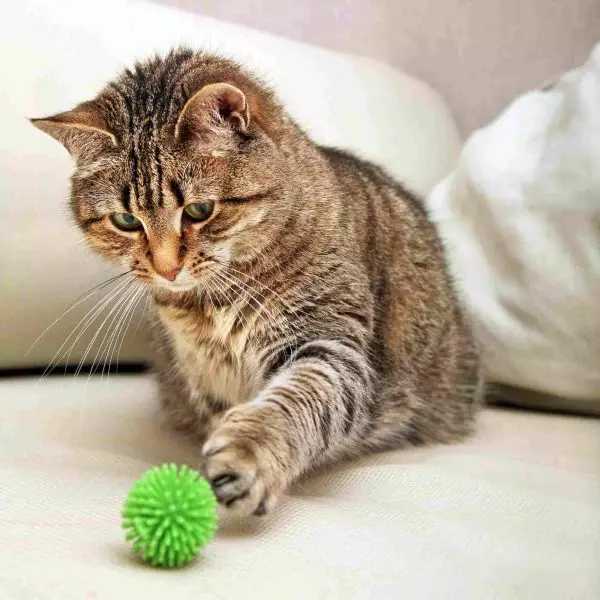
Play is a serious matter
Play is important for companion cats of all ages and stages. It helps young kittens learn about the world and how to interact with it, and keeps older cats engaged and stimulated. Solitary play can help relieve stress and prevent boredom, while interactive play helps to develop and maintain their bond with their humans. Play also encourages physical activity and can help in the prevention and treatment of obesity.
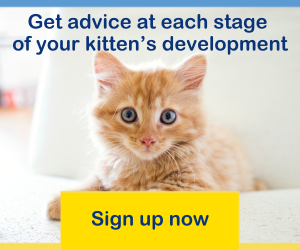 While there is little we humans can do to get a cat to play when she clearly doesn’t want to, we can encourage play by trying out different toys and making time for interactive play. We can try to engage her in play activities at different times of the day, particularly at those times when she is more active.
While there is little we humans can do to get a cat to play when she clearly doesn’t want to, we can encourage play by trying out different toys and making time for interactive play. We can try to engage her in play activities at different times of the day, particularly at those times when she is more active.
And don’t give up on play if your cat appears disinterested; keep trying and one day she may surprise you!
Bow Wow Meow Pet Insurance can help protect you and your cat should an unexpected trip to the vet occur.
-
Find out more about our cat insurance options
-
Get an online pet insurance quote




